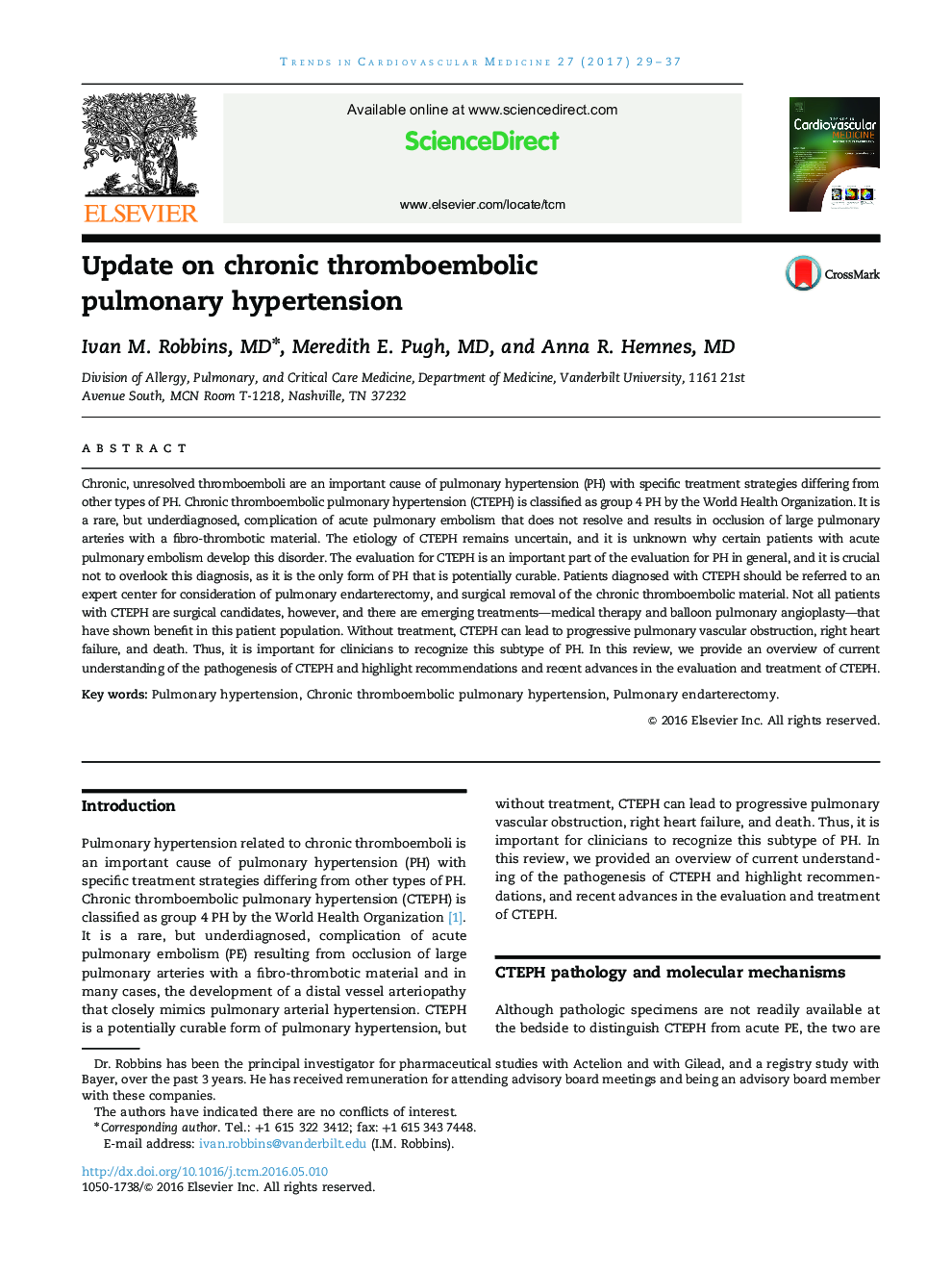| Article ID | Journal | Published Year | Pages | File Type |
|---|---|---|---|---|
| 5622384 | Trends in Cardiovascular Medicine | 2017 | 9 Pages |
Chronic, unresolved thromboemboli are an important cause of pulmonary hypertension (PH) with specific treatment strategies differing from other types of PH. Chronic thromboembolic pulmonary hypertension (CTEPH) is classified as group 4 PH by the World Health Organization. It is a rare, but underdiagnosed, complication of acute pulmonary embolism that does not resolve and results in occlusion of large pulmonary arteries with a fibro-thrombotic material. The etiology of CTEPH remains uncertain, and it is unknown why certain patients with acute pulmonary embolism develop this disorder. The evaluation for CTEPH is an important part of the evaluation for PH in general, and it is crucial not to overlook this diagnosis, as it is the only form of PH that is potentially curable. Patients diagnosed with CTEPH should be referred to an expert center for consideration of pulmonary endarterectomy, and surgical removal of the chronic thromboembolic material. Not all patients with CTEPH are surgical candidates, however, and there are emerging treatments-medical therapy and balloon pulmonary angioplasty-that have shown benefit in this patient population. Without treatment, CTEPH can lead to progressive pulmonary vascular obstruction, right heart failure, and death. Thus, it is important for clinicians to recognize this subtype of PH. In this review, we provide an overview of current understanding of the pathogenesis of CTEPH and highlight recommendations and recent advances in the evaluation and treatment of CTEPH.
